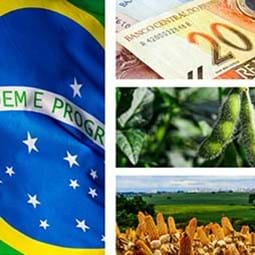
Global Markets and Trade
(Selected research findings from Fiscal Year 2020. Much of this research pre-dates the pandemic. Please visit www.ers.usda.gov/covid-19/ for the latest ERS research related to COVID-19)
A weaker value of Brazil’s currency, the real, during its deep 2014–2016 recession contributed to the record growth in Brazil’s agricultural exports. Devaluation of the currency during this time period encouraged Brazilian farmers to bring more new land into production and increase double cropping. In addition, low energy costs and interest rates, rising demand for biofuel feedstocks, and macroeconomic fluctuations have contributed to Brazil’s emergence as a competitor with the United States in global agricultural markets. An ERS report examines recent trends in Brazil’s export markets as well as projections of future growth based on several different macroeconomic scenarios.
 International Food Security Assessment, 2020–30
International Food Security Assessment, 2020–30
ERS annually publishes the International Food Security Assessment to inform U.S. policymakers as well as international donor organizations of the food security situation in 76 low- and middle-income countries. The report provides projections of food demand and access based on ERS’s food security model, which allows for analysis of income and price changes on food security. An updated analysis using more recent gross domestic product (GDP) information and projections from the September 2020 update of ERS’s International Macroeconomic Data Set (IMDS) was released in January 2021. It re-estimated the COVID-19 impacts on food security for 2020 and 2030 presented in the 2020 IFSA report and found that in 2020, there were 921 million food-insecure people, an increase of 160 million from the pre-pandemic estimate, and almost double the pre-COVID-19 estimate published. By 2030, however, global food security is projected to improve with the number of food-insecure falling to 513 million.


 Brazil's Agricultural Competitiveness: Recent Growth and Future Impacts under Currency Depreciation and Changing Macroeconomic Conditions
Brazil's Agricultural Competitiveness: Recent Growth and Future Impacts under Currency Depreciation and Changing Macroeconomic Conditions